You’re standing in the warm, humid air of a bustling hawker centre. The scent of satay smoke and simmering laksa broth fills the air. You can’t wait to sit down and savor the food but it’s just so unbearingly hot. You decide to get a drink to cool down and step up to a brightly lit stall. Then you see the menu, a dizzying grid of words that feel both familiar and foreign: Kopi C Kosong, Teh Halia, Bandung, Limau, what are these Singaporean local drinks?
For a moment, you might feel a little lost. This isn’t your average café menu. It’s a language born from decades of cultural fusion, a shorthand that almost every Singaporean understands implicitly. These drinks are the rhythm of daily life here, the humble, essential beverages that fuel us.
This guide is here to be your clear companion. It’s designed to turn that moment of confusion into a moment of confident connection. Let’s learn how to order a drink, and in doing so, get a true taste of Singapore.
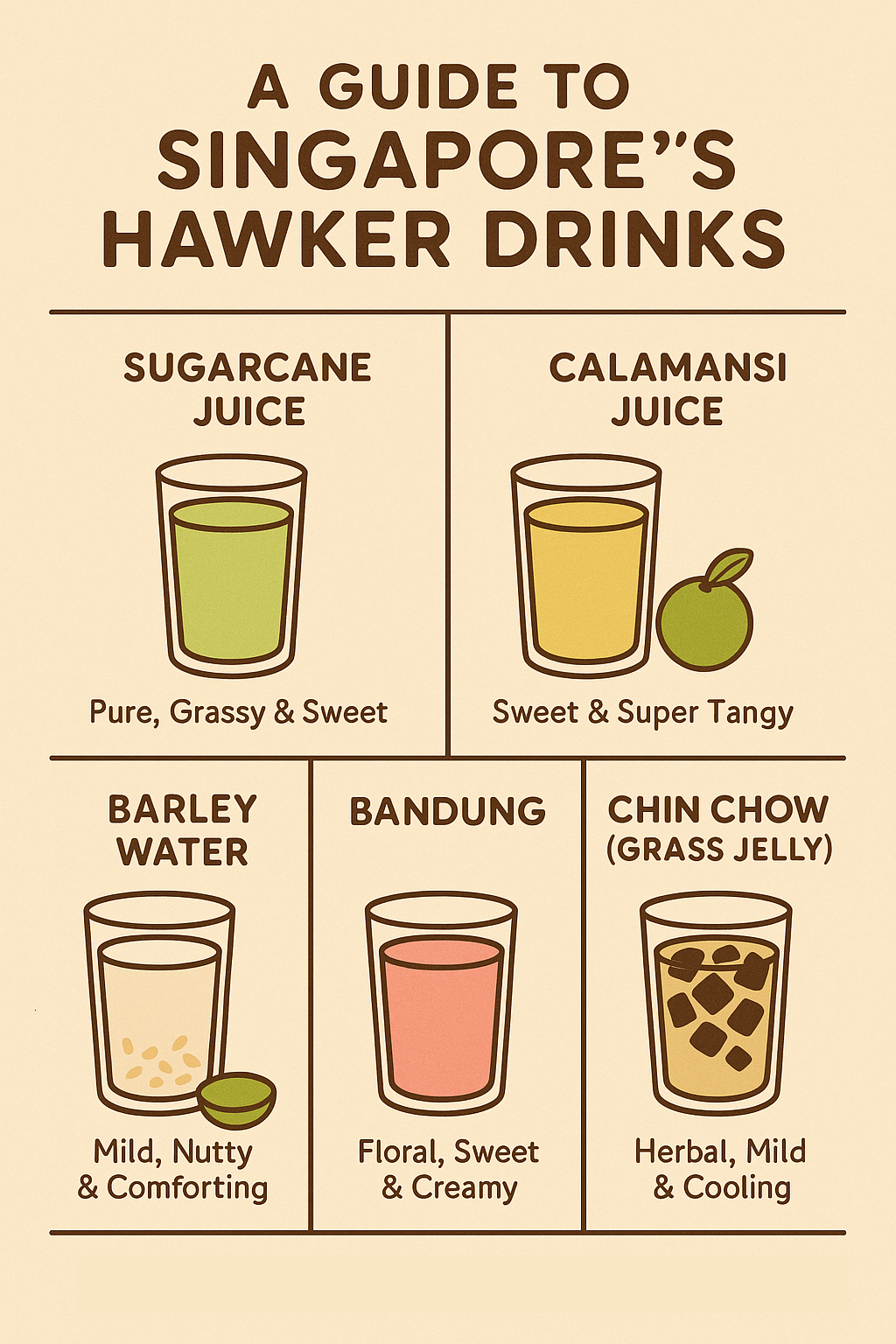
A Friendly Note to our Neighbors
Before we dive in, a quick, friendly note: The world of food has deliciously blurry borders! Many of these beloved drinks are a shared treasure with our neighbors, especially Malaysia. Think of us as culinary cousins with a shared love for a good kopi. So, whether you’re in a Singaporean hawker centre or a Malaysian kopitiam, this guide will have your back.
☕️ The Heart of the Kopitiam: How to Order Coffee and Tea (Kopi & Teh)
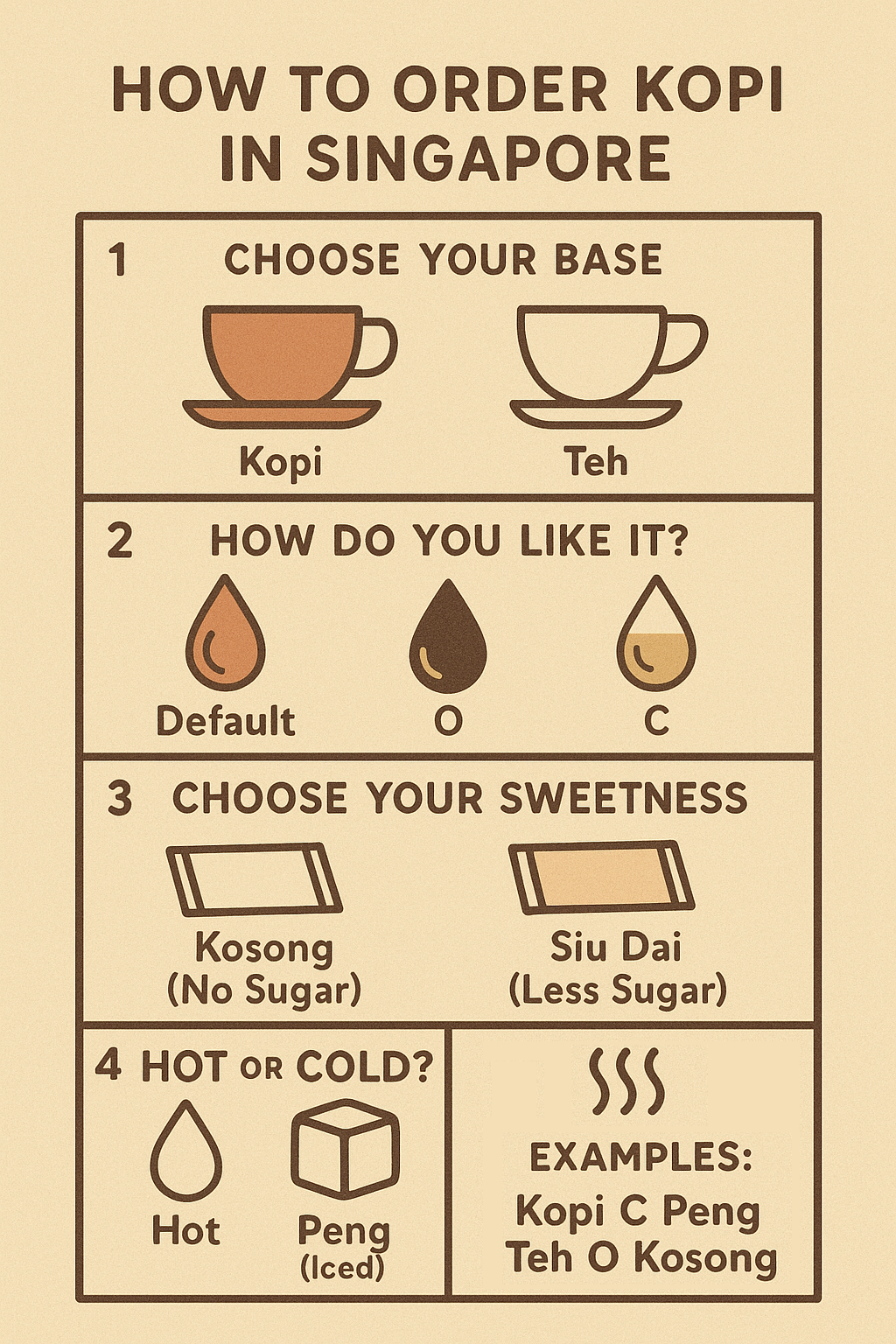
Before we dive into the menu, it’s important to understand the kopitiam (a local term for a coffee shop, from “kopi” for coffee and “tiam” for shop in Hokkien). These are the community hubs of Singapore, spaces where we gather for food and of course, for a simple, affordable, and comforting drink.
The coffee, or kopi, served here is a unique cultural touchstone. It’s made with Robusta beans, which are traditionally roasted with sugar and margarine. This process gives the brew a distinct, rich, and almost caramelized flavor profile, thicker and more potent than the Arabica coffee you might be used to.
Ordering can seem like cracking a code, but it’s a simple efficient language once you know the key terms.
Decoding the Lingo: Your Kopi & Teh Cheat Sheet
Here’s a simple, scannable list to help you order exactly what you want. Remember, the same modifiers apply whether you are ordering coffee (kopi) or tea (teh).
Kopi / Teh: This is the default. It’s a strong brew served hot with sweetened condensed milk at the bottom, which you stir in yourself.
Kopi O / Teh O: The “O” stands for kosong, which means “empty” or “plain” in Malay. This version comes with sugar, but no milk.
Kopi C / Teh C: The “C” refers to evaporated milk (historically, many stalls used the Carnation brand). This drink has unsweetened evaporated milk and sugar, making it creamier and less intensely sweet than the default.
Kosong: This is the magic word for no sugar. You can add it to the end of any order to get an unsweetened version.
- Kopi O Kosong: Black coffee. No milk, no sugar.
- Kopi C Kosong: Coffee with evaporated milk. No sugar.
- Kopi Kosong: Coffee with condensed milk, but with no extra sugar added (though the condensed milk itself is sweet). This is a less common order.
Peng: If you’d like your drink iced, just add this word (meaning “ice” in Hokkien) to the end of any order (e.g., Kopi C Peng, Teh O Peng). It’s usually more expensive than the hot version.
Siu Dai: Find the drinks a bit too sweet for your taste (or want to be more health conscious)? This is your most useful phrase. It means “less sugar” in Hokkien.
Gao / Po: Want to customize the strength? Ask for it “gao” for a stronger brew or “po” for a weaker one.
Honestly as a non-coffee drinker, I still have trouble figuring this out whenever I help to take orders for my friends or my wife. Many people have specific ways they want their drink and will grumble if the wrong order if placed!
The Art of Pulled Tea: Teh Tarik
You may see a drink maker pouring tea from a great height, back and forth between two metal mugs in a dazzling display. This is Teh Tarik, which literally means “pulled tea.” It’s more than just a drink; it’s a performance. The pulling motion does three things: it mixes the strong black tea with condensed milk, cools it to a perfect drinking temperature, and creates a wonderfully thick, frothy head. It’s the standard, most beloved way tea is prepared.
For the More Adventurous Palate: Ginger Tea (Teh Halia)
If you enjoy a bit of spice, you must try Teh Halia. This is a wonderfully soothing and aromatic ginger tea, often made with the “pulled” tea known as teh tarik. The potent infusion of fresh ginger cuts through the richness of the milk, creating a balanced and warming drink that’s perfect for a rainy afternoon or a sore throat.
💧 Classic Thirst-Quenchers: The Hawker Centre Essentials
When the tropical heat feels overwhelming, these are the non-caffeinated classics that we turn to for immediate refreshment. They are simple, delicious, and a quintessential of the hawker centre experience (make sure you try all of these when you come to Singapore!)
Sugarcane Juice: There is nothing quite like watching an uncle at a drink stall feed long, green stalks of sugarcane into a loud mechanical press (don’t worry about his hand, it’s safe with care). The result is a glass of pure, frothy, pale green juice. It has a grassy, delicate sweetness that is incredibly hydrating. You can opt for it to served with a wedge of lemon or lime to add a tangy kick (this would be my personal recommendation!)
Calamansi Juice (Limau): This is Singapore’s answer to lemonade and, arguably, even more refreshing. The calamansi is a small, green citrus fruit with a uniquely floral, tart flavor. The juice is the perfect balance of sweet and sour. For a more complex flavor, ask for it with a sour plum (suan mei), which adds a salty-sour note that elevates the entire drink.
Barley Water (Yi Mi Shui): This one comfort drink. Made from boiled barley grains and lightly sweetened with rock sugar, it can be served hot or cold. It has a mild, nutty flavor and a slightly thicker-than-water consistency. In traditional Chinese medicine, barley is considered a “cooling” ingredient, believed to help reduce body heat, making it a go-to for many on a sweltering day.
Chin Chow (Grass Jelly Drink): Don’t be put off by the name or the jet-black color. Chin Chow, or grass jelly, is a plant-based jelly with a mild, slightly herbal taste (honestly it’s just like any other jelly). It’s typically chopped into cubes and served in a sweet syrup or mixed with soy milk. The result is a cooling drink with a fun, jiggly texture that’s incredibly satisfying.
🎈 For the Curious and the Kids-at-Heart
This section is for the drinks that are a little more playful and indulgent, showcasing Singapore’s creative and nostalgic food culture.
The Mighty Milo: More Than Just Chocolate Milk
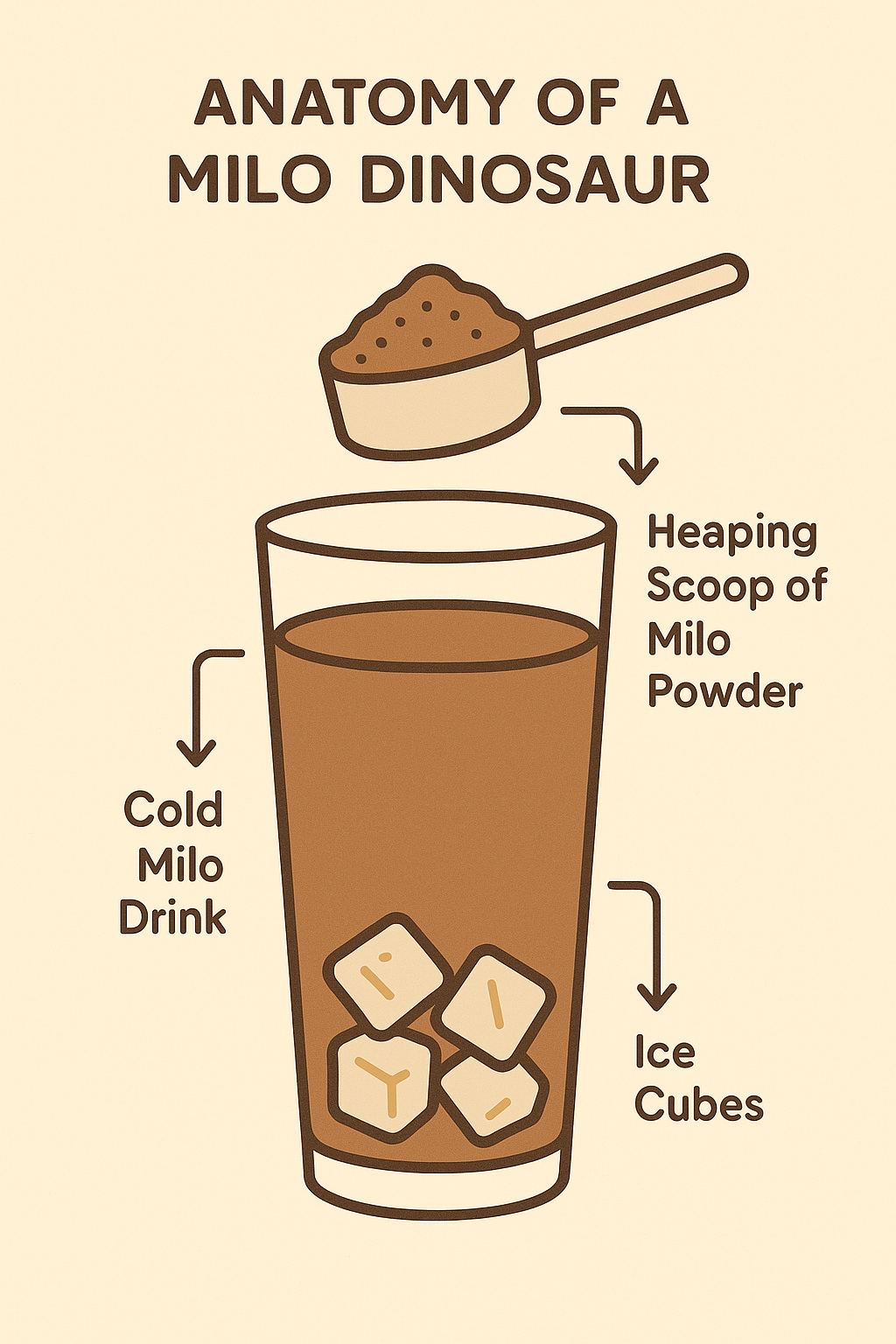
Milo, a chocolate-malt beverage, is a national obsession in Singapore. It’s the taste of childhood, school sports days, and afternoon snacks. But with time, it has turned into a variety of drinks just like your kopi and teh.
- Milo (Iced): The standard, served cold. Simple, malty, and delicious.
- Milo Dinosaur: This is where the fun begins. It’s a tall glass of iced Milo piled high with a generous, heaping scoop of undissolved Milo powder on top. The textural contrast between the cold liquid and the crunchy powder is what makes it so iconic. Don’t think about the calories when you order this, and make sure you don’t choke on the powder!
- Milo Godzilla: If a Dinosaur isn’t enough, you can summon a Godzilla. This takes the Milo Dinosaur and adds a scoop of vanilla ice cream and sometimes a swirl of whipped cream. It’s a drink, a dessert, and an experience all in one. I have not tried this myself!
Other Playful Favorites
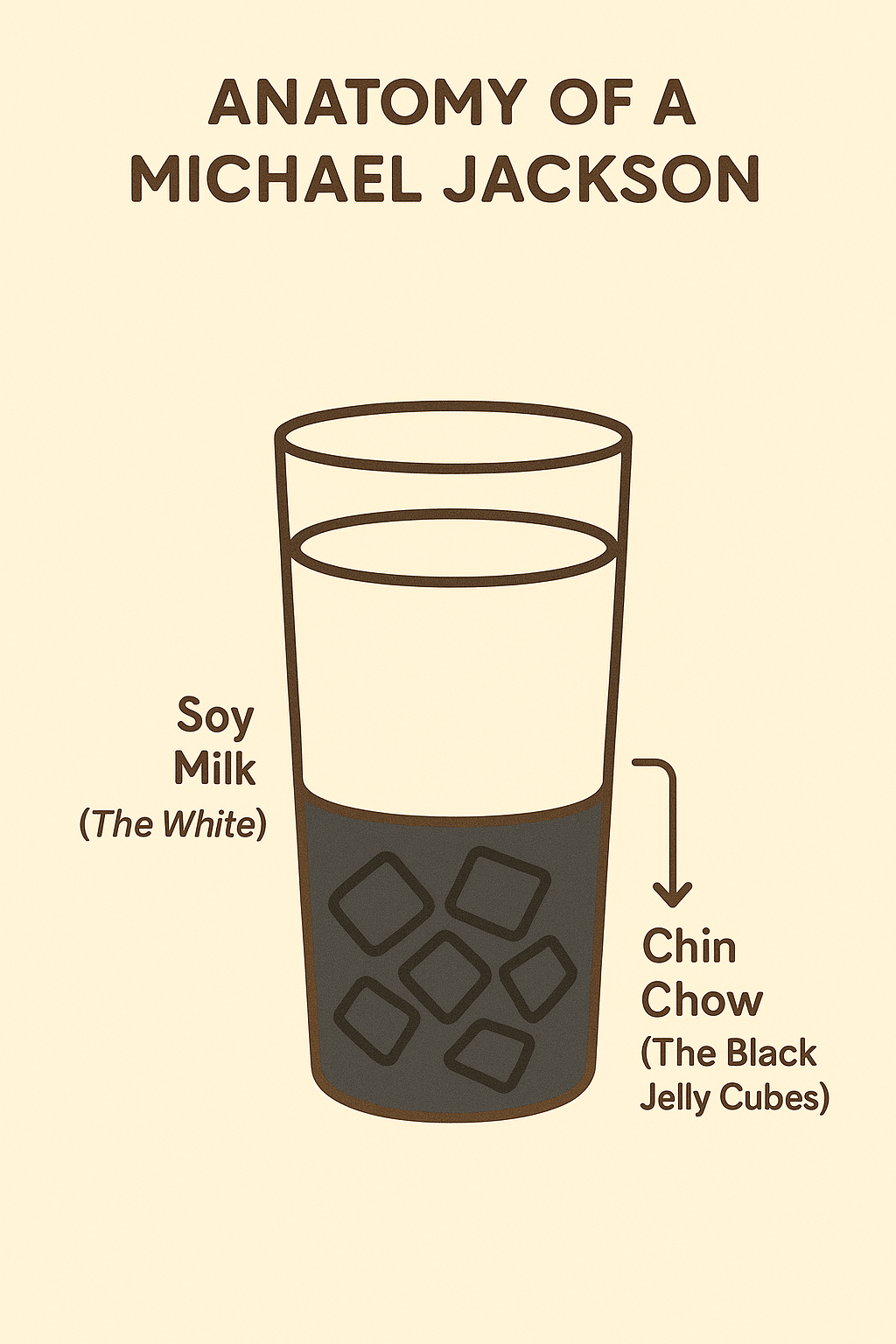
- Bandung (Rose Syrup Drink): You can’t miss this drink, it’s bright, pepto-bismol pink. Bandung is a sweet, creamy drink made from rose syrup mixed with evaporated or condensed milk. Its floral aroma and unmistakable color make it a photogenic and nostalgic favorite, especially popular at celebrations and Malay weddings.
- Michael Jackson: Can you guess what this is? A drink with a sense of humor. This is the simple, clever name given to a mix of black grass jelly (chin chow) and white soy milk. The black-and-white combination is what gives it its name. It’s a smooth, balanced, and less sweet option for those who want something refreshing but not sugary.
✨ The Modern Classic: A Note on Bubble Tea
While not a traditional kopitiam drink, it’s impossible to talk about our drink culture without mentioning bubble tea. Originating in Taiwan, this phenomenon has been wholeheartedly embraced by Singaporeans. You will find bubble tea shops in every mall and on almost every street corner, competiting with each other for our sweet tooth.
It consists of a tea base (black, green, or oolong), flavorings (from milk tea to fruit purees), and a wide array of toppings, the most famous being chewy tapioca pearls. A key part of the experience is customizing your sugar level, typically from 0% to 100%. If you want to try it like a local, ordering with a reduced sugar level (like 25% or 50%) is common.
✅ Practical Tips for a Smooth Drink-Ordering Experience
Here are a few on-the-ground tips to help you navigate the drink stall like a seasoned local.
- Where to Go: The best and most affordable places are hawker centres, food courts, and standalone kopitiams. This is where you’ll find the most authentic versions.
- “Takeaway” or “Have Here?”: If you want your drink to go, the local term is “da bao.” Your iced drink will often be served in a clear plastic bag with a red string handle, which is a classic Singaporean sight (but more commonly plastic cups these days). Otherwise, they will assume you are drinking it there from a glass.
- Cash is Key: While Singapore is a technologically advanced city, some of the small, family-run drink stalls in hawker centres still operate on a cash-only basis. It’s always wise to have small bills and coins ready.
- When in Doubt, Point: Don’t worry if you forget the names. The uncles and aunties running the stalls are almost always friendly and patient. A simple smile and pointing at what you want (or what someone else is having!) works perfectly well. Trying is what matters.
Frequently Asked Questions (FAQ) for Singaporean Local Drinks
What is the most famous local drink in Singapore?
While kopi (local coffee) is arguably the most consumed daily drink, the Milo Dinosaur is one of the most famous and iconic “fun” drinks that is unique to Singapore and Malaysia.
Is it safe to drink tap water in Singapore?
Yes, the tap water in Singapore is perfectly safe to drink and adheres to the World Health Organization’s guidelines for drinking water quality.
What do “O” and “C” mean when ordering coffee in Singapore?
“O” means the drink comes with sugar but no milk (black coffee or plain tea). “C” means it comes with evaporated milk and sugar, resulting in a creamier, less sweet drink than the default, which uses condensed milk.
How much does a local drink cost at a hawker centre?
Typically, a local drink like kopi or teh costs between S$1.20 and S$1.80. Juices and more complex drinks like a Milo Dinosaur might cost between S$2.00 and S$3.50, making them a very affordable treat.
🤔 A Final Sip: Conclusion
Travel is often measured in sights seen and destinations checked off a list. But sometimes, the most resonant travel memories are found in the small, everyday moments. Understanding the simple ritual of ordering a local drink is one of them.
It’s a gateway to daily life, a small window into cultural norms (like the concept of “cooling” foods), and a taste of the simple pleasures that connect people. When you order a Kopi C Siu Dai, you’re not just getting a coffee; you’re participating in a shared local language.
So next time you’re in Singapore, step confidently up to the counter, try something new, and drink like a local. It’s more than just a beverage; it’s a taste of my home, even when you’re far from your own.
Drink in hand, ready to explore the rest of Singapore? Click here!
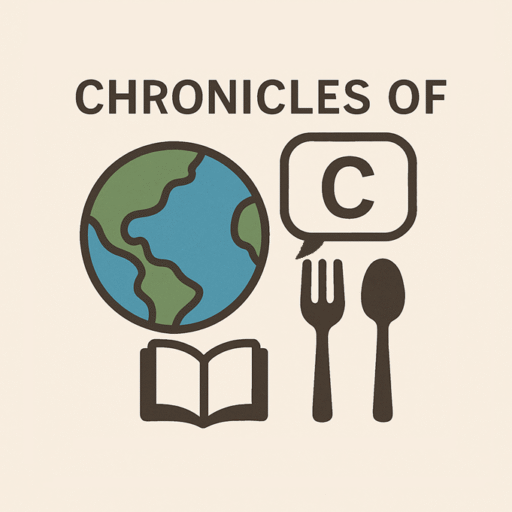
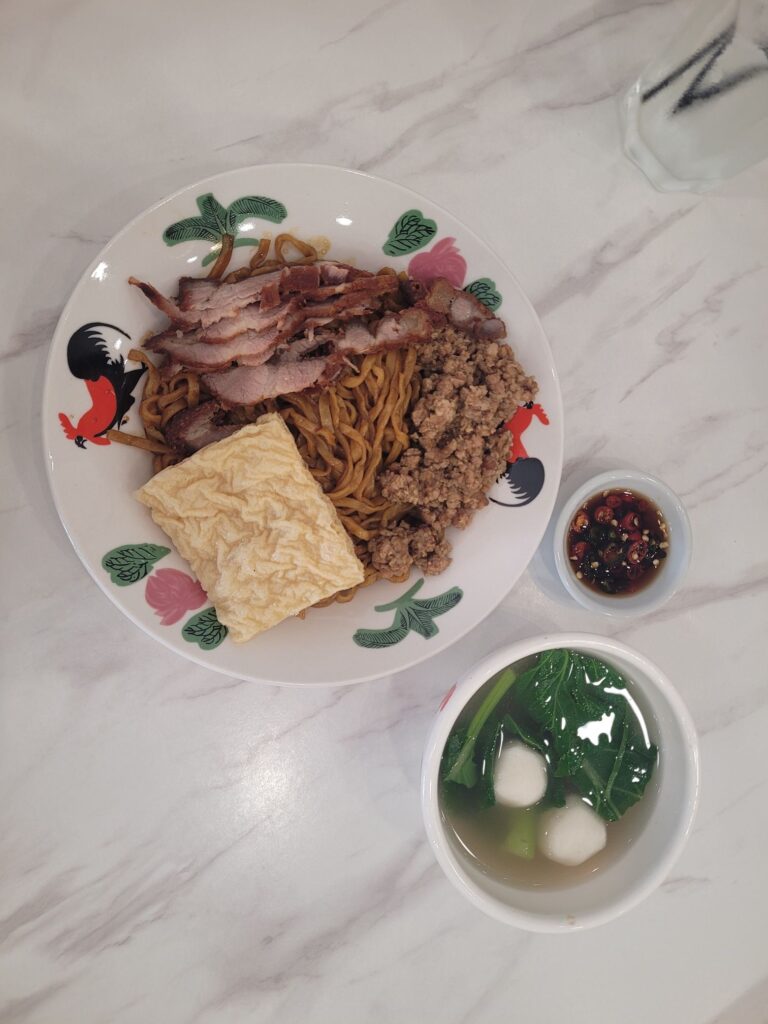
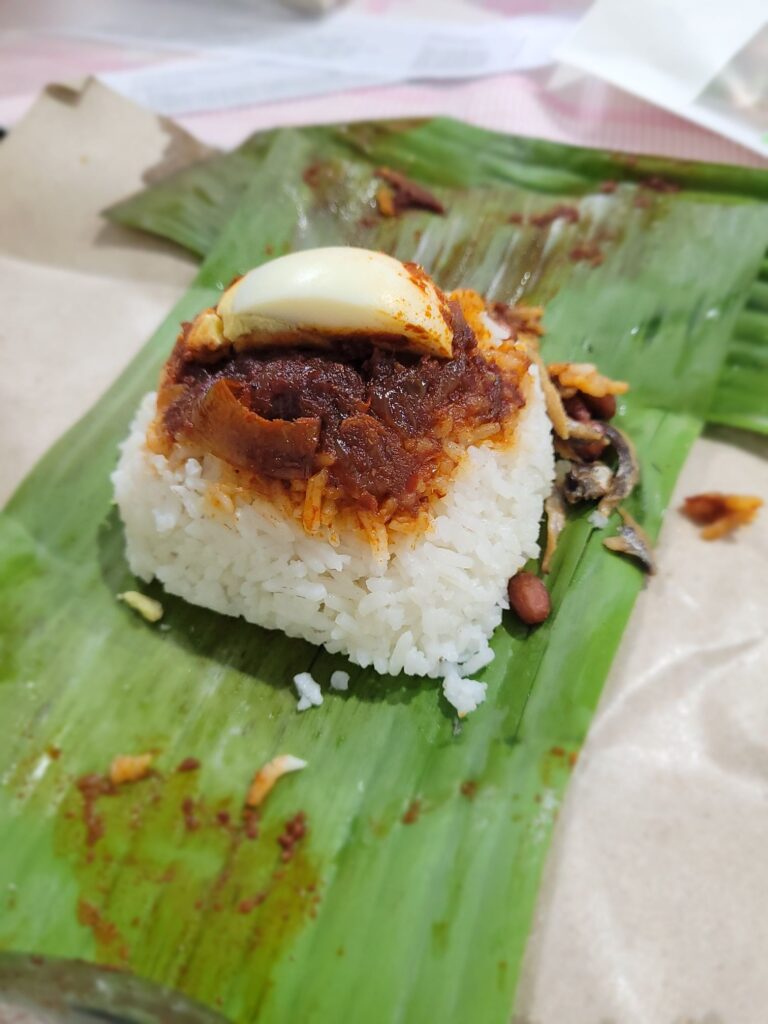
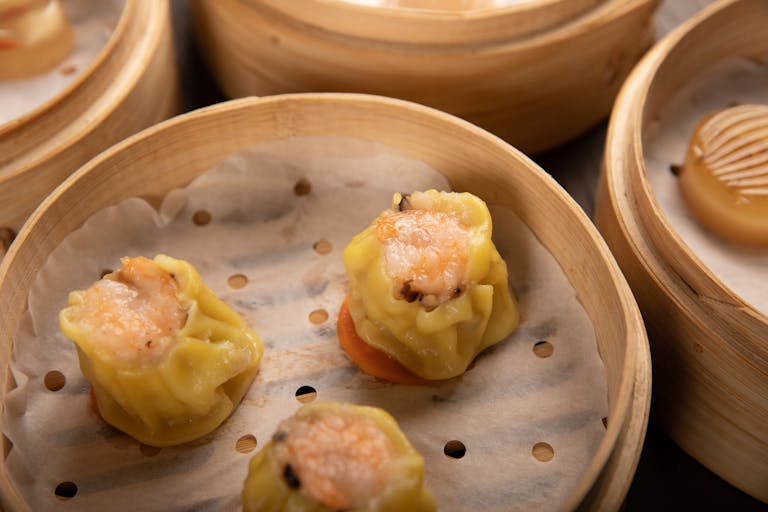
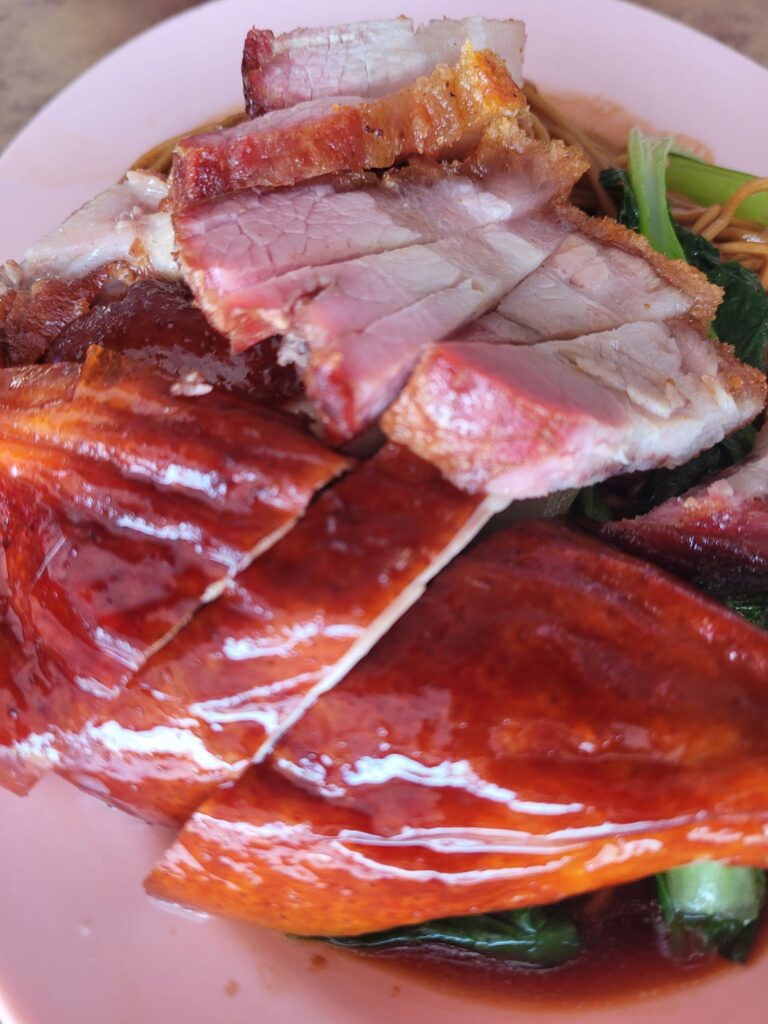
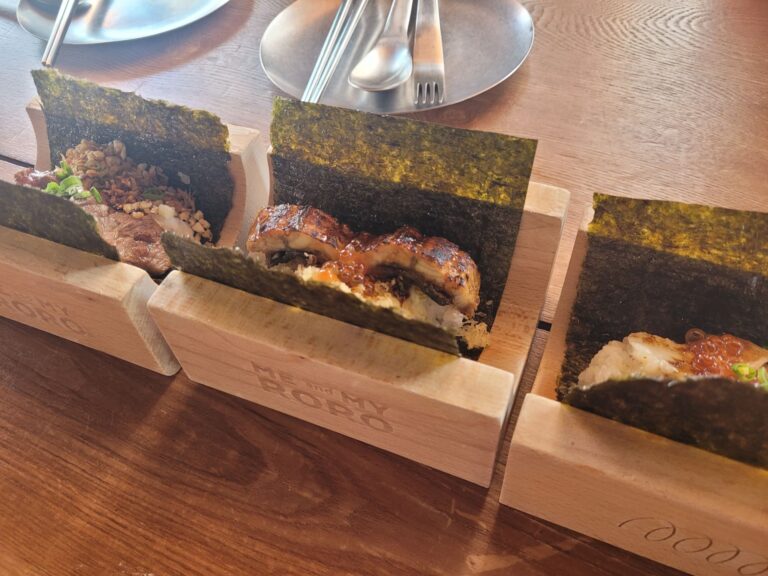
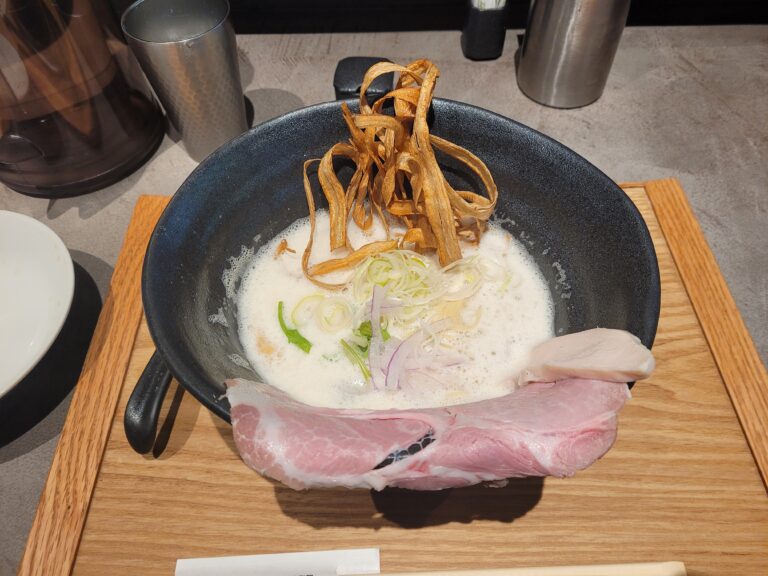
Extremely high yield information, thanks!